“When you see someone putting on his big boots, you can be pretty sure that an adventure is going to happen,” wrote A.A. Milne in Winnie the Pooh. This sentiment resonates deeply with anyone who understands the transformative power of a great pair of boots. For those who value preparedness and style, investing in quality footwear is essential, and Chelsea boots stand out as a versatile and enduring choice.
For years, like many, my footwear choices leaned heavily on comfort and practicality. White Nike Air Force Ones were a frequent choice, but for enduring the Colorado winters, leather Chelsea boots became indispensable. Their ease of wear and adaptability made them a go-to option. Loyalty to familiar favorites is common, and for six years, Embury Leather Casual Dr. Martens Chelsea boots were my trusted companions. From navigating Parisian streets to exploring Ireland solo, these Dr. Martens were more than just shoes; they were part of my adventures. However, a shift occurred when I traded my beloved Dr. Martens for Blundstone Classic 587s. This wasn’t a casual decision, but a deliberate exploration of another iconic brand.

Now, with my Blundstones approaching their first anniversary, having journeyed across Route 66, multiple states, and national parks, a comparative reflection is due. Both Dr. Martens and Blundstone offer rich histories, distinctive features, and unique fits, making them strong contenders in the search for the perfect Chelsea boot. This exploration delves into the nuances of each brand, helping you decide which best suits your needs and style.
Brand Heritage: Dr. Martens and Blundstone – A Tale of Two Origins
Dr. Martens, often referred to as “Docs,” emerged from a fascinating blend of British fashion sense and German ingenuity in the mid-20th century. Their history is deeply intertwined with the counterculture movements of the Cold War era. Dr. Martens became the footwear of choice for rebellious youth and hardcore musicians during the social and political upheavals of the 1970s and 80s. The grunge era of the 90s and the burgeoning festival culture further solidified Dr. Martens‘ reputation as a symbol of anti-establishment sentiment. More than just boots, Dr. Martens embodied punk rock ethos – defiance, individuality, and nonconformity. They are iconic Dr. Martens boots, representing a powerful cultural statement.
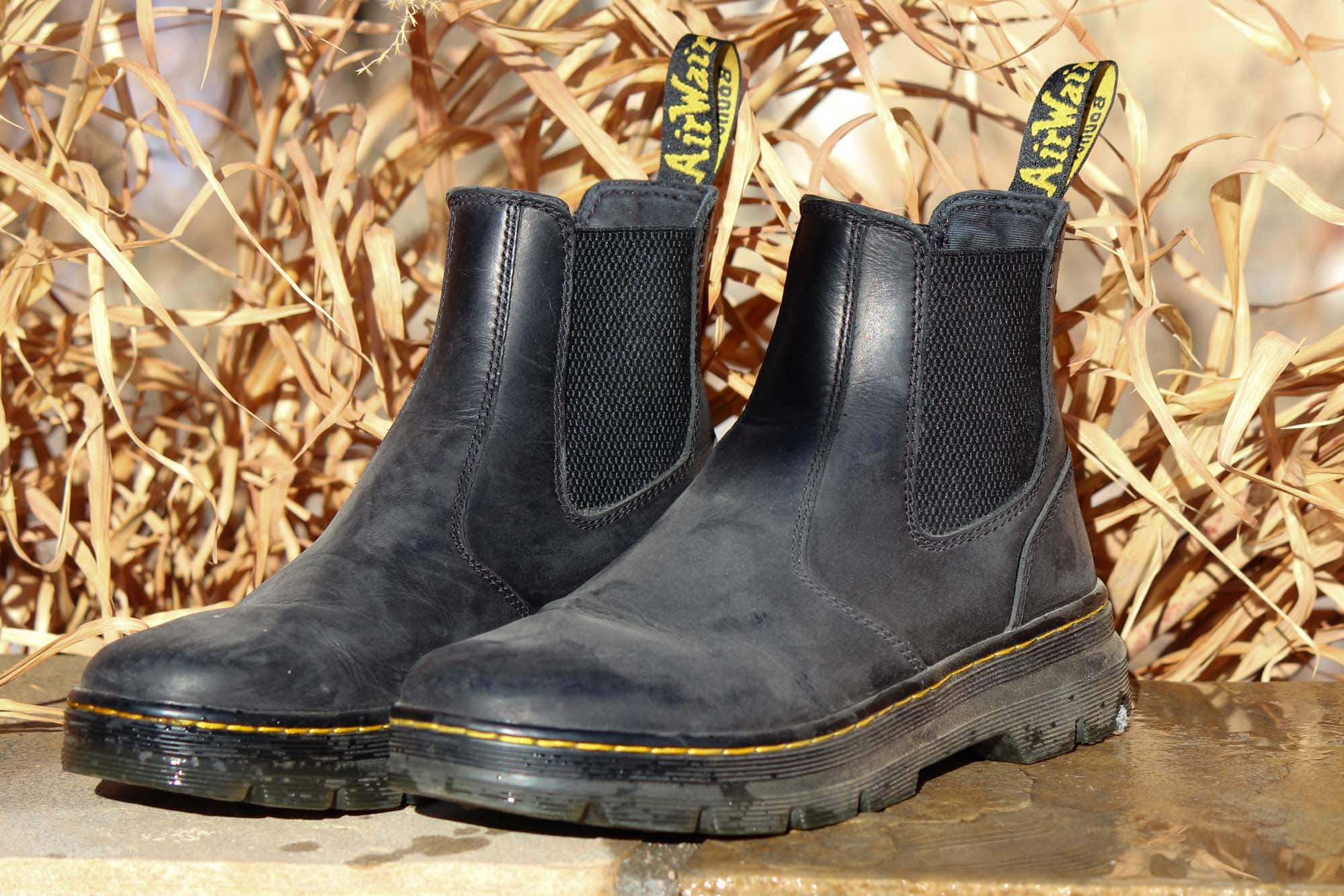
A classic Dr. Martens 1460 boot, showcasing the brand’s iconic design and rebellious spirit.
Blundstone, in contrast, hails from the rugged landscapes of Tasmania, Australia. Their origins are rooted in practicality and resilience, honing their craft during World War I when they became a primary boot supplier for Australian troops. Production scaled dramatically in World War II, providing half a million pairs to the Australian army, many deployed in the harsh Pacific theater where reliable gear was crucial for survival. This legacy cemented Blundstone’s image as an outfitter for adventure and durability. This reputation was further enhanced in the 1970s when Blundstone boots accompanied an Australian expedition to Mount Everest, proving their mettle in extreme conditions. Blundstone’s heritage speaks to resilience and practical performance, a stark contrast to the rebellious roots of Dr. Martens.

Blundstone Chelsea boots in a rugged outdoor setting, reflecting their heritage of durability and adventure.
Design and Aesthetics: Defining the Look of Dr. Martens and Blundstone
While both Dr. Martens and Blundstone Chelsea boots are available in classic black leather, their aesthetic approaches diverge significantly. Dr. Martens are instantly recognizable by their signature chunky sole and pronounced rounded toe. The iconic yellow stitching and the branded heel loop featuring “bouncing soles” further distinguish them. Dr. Martens outsoles are typically made from polyvinyl chloride (PVC). PVC offers a cost-effective solution but is generally less durable than the materials used by Blundstone. The aggressive tread pattern on Dr. Martens contributes to their edgy, urban aesthetic, a hallmark of the brand’s design philosophy. For those seeking to express individuality through style, Dr. Martens offers a wide canvas for personalization.
Dr. Martens excels in variety, offering diverse leather types from smooth finishes to vegan and textured options, catering to individual preferences. The color palette is extensive, ranging from bold statement colors like cherry red and white to classic blacks and browns, empowering wearers to showcase their unique style. While my black Dr. Martens Chelsea boots were versatile, they always felt most at home in urban environments, reflecting the brand’s street-style DNA.
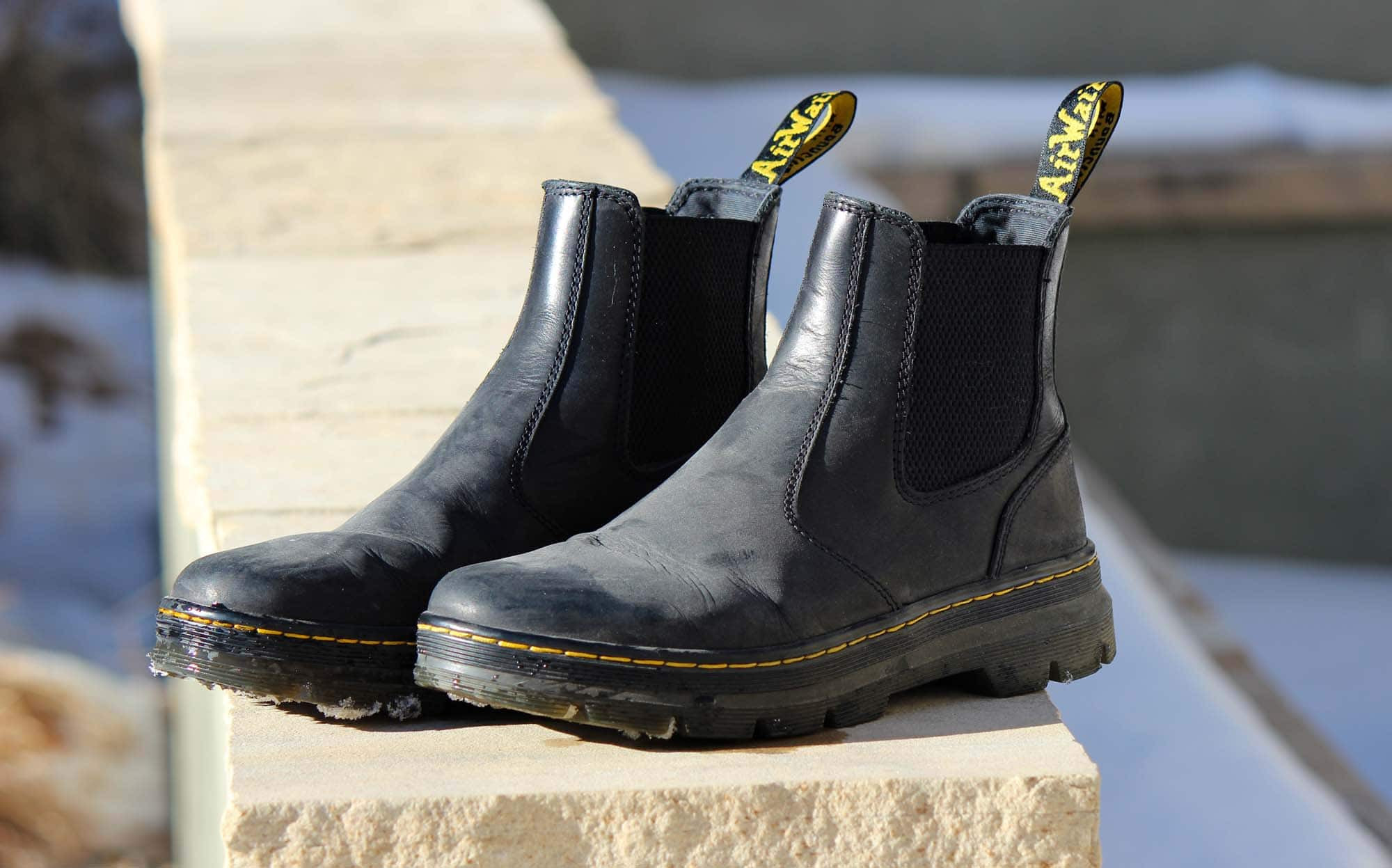
Close-up of Dr. Martens Chelsea boot showcasing the signature yellow stitching and chunky sole, highlighting the brand’s iconic design details.
Blundstones prioritize a more streamlined and practical design. They are known for using premium leather, including vegan alternatives, often in earthy tones like brown, black, and tan, reflecting their outdoor and workwear roots. A distinguishing feature of Blundstones is the double pull tabs, located at both the front and back of the boot, enhancing ease of wear. Blundstone outsoles are made from thermoplastic polyurethane (TPU), known for its superior abrasion resistance and durability. This choice of material underscores Blundstone’s commitment to longevity and performance.
The Blundstone Classic 587 model, in particular, offers a relaxed fit and eliminates the need for a break-in period, prioritizing immediate comfort. They also have a slightly lower profile compared to Dr. Martens Chelsea boots. While Dr. Martens rise slightly higher above the ankle, this subtle difference can be significant, especially for those who prefer specific pant cuff lengths. Blundstones are designed to develop patina more quickly than Dr. Martens. This patina, a change in the leather’s appearance over time, is celebrated by boot enthusiasts as a mark of character and experience, much like the patina on a well-loved watch. While regular polishing can preserve the original color, many, including myself, appreciate the worn-in look of well-used boots. Blundstones embody a no-nonsense, utilitarian aesthetic, appealing to those who value understated style, durability, and practicality over overt fashion statements, contrasting with the bolder style of Dr. Martens.
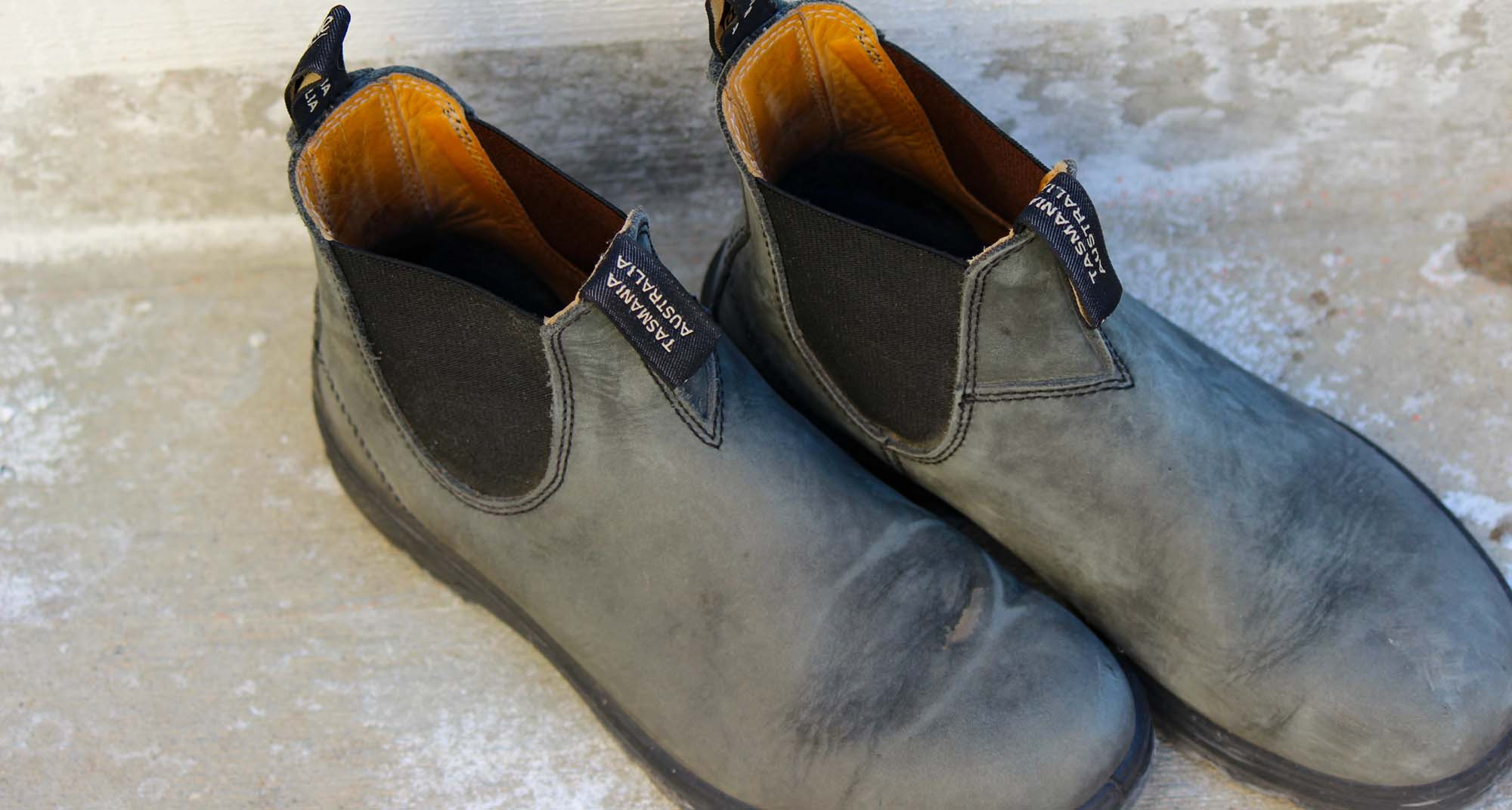
A pair of Blundstone 587 Chelsea boots showing a worn patina, emphasizing the brand’s focus on durability and the beauty of aged leather.
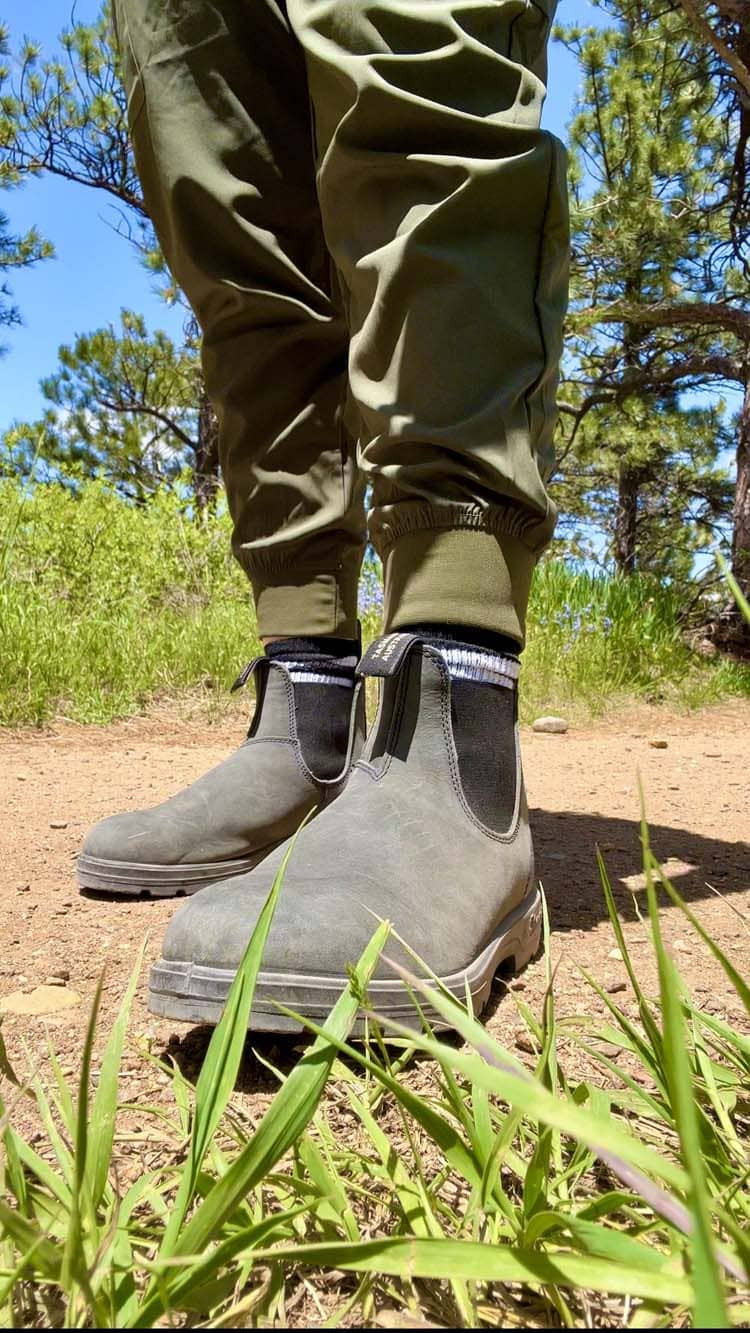
Side-by-side comparison of Dr. Martens (left) and Blundstone (right) Chelsea boots, highlighting the differences in sole thickness, toe shape, and overall silhouette.
While both brands offer lace-up and Chelsea boot styles, Dr. Martens are often favored for their lace-up boots, whereas Blundstone excels in the realm of laceless Chelsea boots, showcasing distinct brand strengths within the broader boot market.
Fit and Sizing: Comfort and Practicality of Dr. Martens and Blundstone
Dr. Martens are notorious for their break-in period, a common experience though it can vary depending on the leather type. In my experience, Ambassador or Wyoming black leather and Crazy Horse brown leather versions tend to be more pliable, requiring a shorter break-in of about a week. However, it’s important to acknowledge the numerous accounts of challenging break-in experiences with certain Dr. Martens leathers. Personal experiences can vary, and while mine were relatively mild, others may face a more demanding initial wear period. Conversely, Blundstones are widely praised for their out-of-the-box comfort, requiring virtually no break-in time.
Dr. Martens offer tighter ankle support compared to Blundstones, a feature I find advantageous for hiking on uneven terrains like loose gravel. While Blundstones are often touted as versatile “go-anywhere-do-anything” boots, I find them less suitable for hikes on unstable surfaces due to their wider opening, which can increase the risk of ankle roll. For established trails and dirt paths, Blundstones are perfectly adequate, but for more challenging terrains, Dr. Martens‘ ankle support provides added stability and security.

Dr. Martens Chelsea boots in a rugged outdoor setting, highlighting their suitability for urban exploration and more demanding terrains due to ankle support.
While Dr. Martens‘ classic 1460 lace-up boots can run slightly large, their Chelsea boots generally fit true to size. Individuals with wider feet might consider sizing up in Dr. Martens Chelsea boots as they can be somewhat narrow. The snug fit of Dr. Martens also limits the thickness of socks that can comfortably be worn, offering less room than Blundstones. My Dr. Martens are a US men’s size 8, providing a benchmark for comparison.
Blundstone Classic 587s offer a more generous fit, easily accommodating thick wool socks, even double layers for extra warmth in winter. However, sizing Blundstones can be more complex, particularly for those unfamiliar with Australian sizing. The official website uses Australian measurements, requiring conversion for US sizes. My Blundstones are an Australian size 7, equivalent to a European 41 or a US men’s 8, demonstrating the need for careful size conversion when choosing Blundstones.
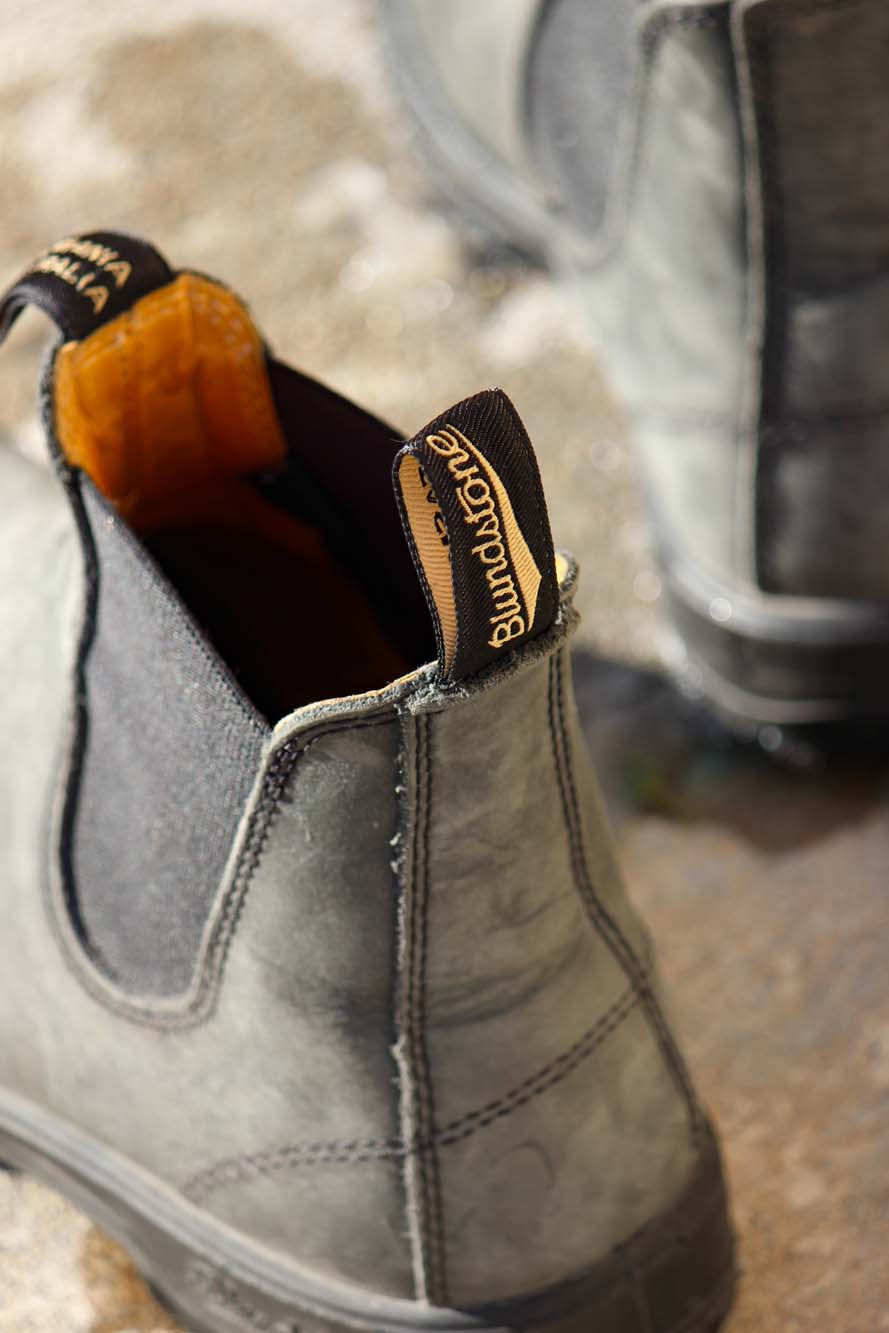
Blundstone Chelsea boots comfortably paired with thick wool socks, showcasing their roomier fit and suitability for colder climates.
A significant difference between Dr. Martens and Blundstone is price. Dr. Martens Embury leather Chelsea boots typically retail around $130, while Blundstone Classic 587s in rustic black are priced higher at approximately $200. This price difference reflects the variations in materials, construction, and brand positioning.
Conclusion: Choosing Between Dr. Martens and Blundstone Chelsea Boots
Ultimately, both Dr. Martens Embury leather Chelsea boots and Blundstone Classic 587s are excellent choices, depending on individual preferences and priorities in a Chelsea boot. While I still appreciate my Dr. Martens, my current preference leans towards Blundstones. This shift is driven by personal wearing habits, evolving aesthetic priorities, and practical considerations.
My slight supination, where weight is distributed more on the outer edges of my feet, has become a significant factor over time. This wearing pattern has highlighted the difference in outsole durability. I’ve observed that the PVC outsole on Dr. Martens tends to wear down more unevenly compared to the more robust TPU outsole of Blundstones. For someone who wears boots daily, this difference in wear resistance becomes noticeable and impactful over the lifespan of the boots.

Close-up of worn Dr. Martens (left) and Blundstone (right) outsoles, illustrating the wear patterns and material differences discussed in the conclusion.
However, the primary driver for switching to Blundstones was a change in brand image preference. My late twenties brought a shift in personal style, moving away from a punk-influenced aesthetic towards a more outdoors-oriented and understated style. Blundstones resonated with this evolving preference, aligning with a desire for practicality and a less overtly street-fashion focused image. The $70 price increase was a consideration, but after nearly a year of wear and considerable mileage, the switch to Blundstones has proven to be the right choice, reflecting a change in both functional needs and personal style evolution. For those considering Dr. Martens or Blundstones, assessing your personal style, intended use, and budget will guide you to the ideal Chelsea boot for your adventures.

